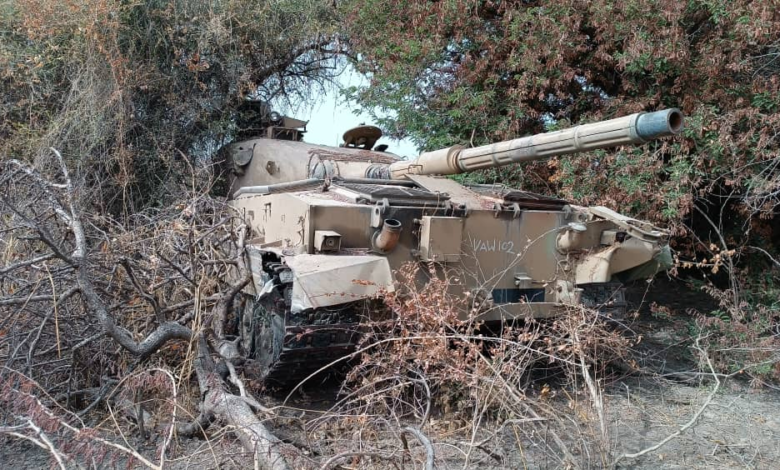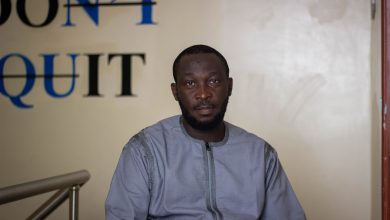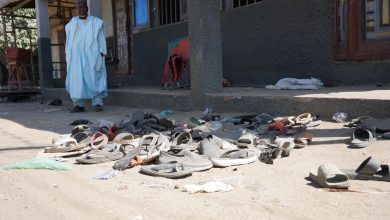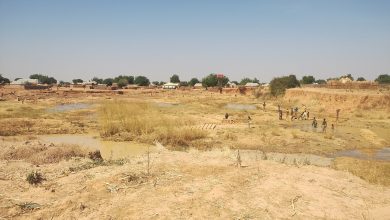Analysing Nigerian Military’s Deep Push Into Sambisa Forest
The success of the ongoing operation in the Northeast may be determined by the armed forces’ ability to continue to weaken the insurgents as well as secure hinterland areas in Lake Chad and the Savannah woodlands of Borno.

Nigerian troops have recently pushed deeper into the Sambisa forest after achieving a limited incursion last year, the advancement leading to the dismantling of shelters and the capture of a vast number of weapons and equipment.
Over the past few weeks, counter-insurgency troops participating in the subsidiary operation code-named ‘Desert Sanity’ have been conducting combat patrols and clearance operations aimed at insurgents and their harbour areas in parts of the Northeast. The offensive has already led to significant discoveries and dislodgement of insurgents, particularly by the troops sweeping through the Sambisa forest in gun trucks and armoured vehicles.
On March 26, troops on a clearance patrol in the forest area found the wreckage of the Air Force’s Alpha Jet that crashed a year earlier with two pilots on board. On the same day, the Army disclosed that troops conducted further exploitation around Ukuba and Camp Zairo, and discovered workshops dedicated to making Improvised Explosive Devices (IEDs).
The Army had earlier announced that troops destroyed insurgents’ enclaves in this section of Sambisa forest. Photos from the operation showed troops destroying makeshift shelters and the recovery of several pieces of equipment and weapons including Vickers tank, Panhard VBL recce vehicle, Streit Spartan, and Mowag Piranha armoured vehicles. There were also artillery weapon systems such as the OTO Melara Mod 56 105mm, 122mm D-30, and Haubits FH77 155mm howitzers.
On March 23, troops were reported to have also destroyed a car rigged with explosives and harbour areas around the Njimia-Alafa axis. Islamic State West Africa Province (ISWAP) has recently escalated the use of Suicide vehicle-borne improvised explosive devices (SVBIED) for defensive actions including in Arra and Njimia of Sambisa.
Official and leaked images from the operations showed the presence of un trucks fitted with heavy machine guns and the ST-1 fire support vehicle, which had onboard systems and a 105 mm gun capable of engaging and destroying SVBIEDs. Other valuable military weapon systems seen are the VP1 and FV103 tracked armoured vehicles suited for operations in off-road conditions such as sand, mud, and rough terrains.

Open-source information and geolocation using publicly available satellite imagery from Google Earth provide insights into the range of the ongoing operations and some of the areas that have been cleared by troops. This includes a section of the Savannah woodland flanked by Alafa and sandwiched between Dure I and II.
This area consists of vegetation including trees and shrubs that provide concealment for shelters against airstrikes and a nearby river that would have served as an important source of water for survival and the sustenance activities such as farming. A network of dirt roads for moving within the area and to other locations is also visible.
The control of the Sambisa forest area switched in 2021 from Boko Haram, after ISWAP insurgents launched an invasion that climaxed in the death of Boko Haram leader Abubakar Shekau. Although some of the insurgents joined the ranks of the rival group, over 3,000 combatants and more than 35,000 civilians, including captives, have fled and surrendered to state authorities.
However, some Boko Haram insurgents have opted for the path of resistance in the adjacent Mandara mountain range close to the border with Cameroon. There is continued opposition too from the group’s Lake Chad faction.
Air support, as well as assistance from the Civilian Joint Task Force (CJTF) and informants, have made the military’s incursion easier and reduced resistance in a manner that was not possible during Operation Tura Takai Bango in 2021.
The current onslaught is also taking place around an area that has been the target of previous ground assaults and airstrikes aimed at destroying the insurgents’ infrastructure. These military raids were either conducted as part of the counter-insurgency or subsidiary operations.
The military has previously carried out raids in Njimia, Dure, and Alafa. Similarly, Camp Zairo, also known as “Camp Zero”, was in the news cycle in the last quarter of 2016 during an operation in the area and the first quarter of 2018. The ability of insurgents to melt away and vacate an area when the odds are not in their favour and return after the troops have moved out has been a recurring problem.
Consolidating gains
The ability of the military, support forces, and political leadership to harmonise strategic goals is essential for diminishing the threat in the region. Furthermore, understanding and exploiting the push factors behind the defections and the evolving structure and character of the insurgent groups is necessary to consolidate current operational gains.
The implementation of past lessons is also vital. For example, the military should sustain logistics support using air bridge and troop rotation through improved participation of other support forces, particularly in protecting garrison towns, to free more combat boots for hotspots. IED threats should be tackled as well and equipment should be provided for night operations and navigating the effects of the rainy season.
Hinterland communities must be secured and managed to prevent reoccupation. The intensity of operations in the Alagarno forest and Lake Chad in coordination with the Multinational Joint Task Force (MNJTF) is also essential to deny insurgents safe havens and provide conditions for governance, development, and law enforcement operations.
This is crucial, especially at a time when the Borno state government is pushing forward with reconstruction, rehabilitation, and resettlement programmes in abandoned communities. The success of this move depends on security and access to resources for livelihood.
Support Our Journalism
There are millions of ordinary people affected by conflict in Africa whose stories are missing in the mainstream media. HumAngle is determined to tell those challenging and under-reported stories, hoping that the people impacted by these conflicts will find the safety and security they deserve.
To ensure that we continue to provide public service coverage, we have a small favour to ask you. We want you to be part of our journalistic endeavour by contributing a token to us.
Your donation will further promote a robust, free, and independent media.
Donate HereStay Closer To The Stories That Matter




